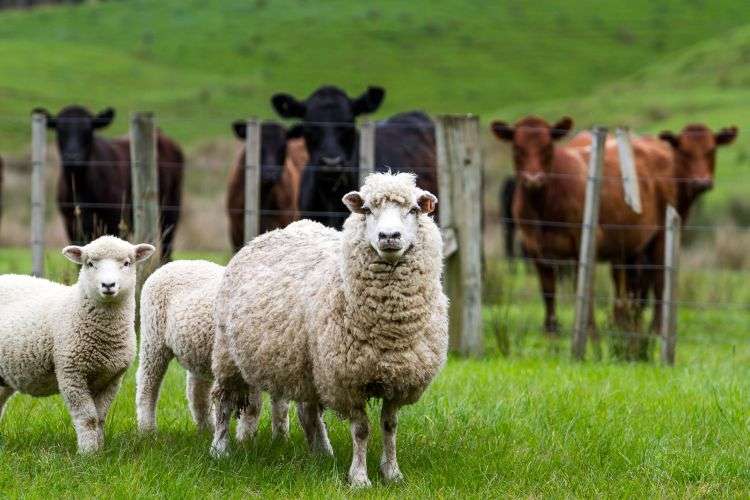The repeated emergence of the Bluetongue virus (BTV) amongst European livestock in recent decades has been shaped by its ability to re-assort its genes, a study has found.
The virus infects ruminant animals such as cattle and sheep and is transmitted via biting midges causing a range of symptoms which can be fatal. There are also indirect impacts including weight loss, reduced milk production, abortion and deformed calves.
Most of Europe was considered to be BTV free until the late 1990's, but since then multiple strains of the virus have invaded with new strains arriving annually, causing outbreaks across the continent. An outbreak in 2006-08, which started in the Netherlands, reaching the UK in 2007 before spreading across the entire European community, resulted in the death of more than two million sheep. Future incursions of BTV continue to be a threat.
BTV is a segmented virus, which means its genome is divided into multiple parts, 10 in total, similar to chromosomes in higher organisms. When two segmented viruses of the same species infect the same cell, their progeny may incorporate segments picked up from either of the 'parental' viruses.
This process is called 're-assortment' and represents an important way for segmented viruses to evolve. Re-assortment is common with the Influenza A virus, which is also segmented and is a factor in the development of zoonotic flu strains such as avian and swine flu that are able to infect humans.
Scientists at the University of Glasgow and The Pirbright Institute have produced a comprehensive analysis of the re-assortment patterns of BTV in Europe, which reveals that the mixing of viral genomes is not strictly random and re-assortment is commonly followed by novel adaptive changes in the progeny virus.
The discovery, published in the journal PLoS Pathogens, points to important functional links, or paired associations, between certain segments.
Dr Roman Biek said: "Whereas re-assortment has received a lot of attention in certain segmented viruses, especially influenza A, its frequency and biological consequences remain poorly understood for most of the others.
"This study of the bluetongue virus confirms earlier reports that re-assortment is common and can involve segments derived from live vaccines used to control outbreaks.
"Our findings have important implications for the classification and control of segmented viruses and generate new insights and hypotheses about the biological interactions among different parts of the bluetongue virus genome."
The study confirms genetic re-assortment is common and widespread and has had a major impact on the genomic composition of European BTV strains.
Genetic mixing occurs easily and appears to be the norm whenever multiple strains co-exist. The attenuated vaccine viruses that have been used in southern Europe have also contributed segments to circulating field strains.
Prof Mertens commented: "This study has important implications for the emergence and evolution of segmented-genome viruses and even whole virus populations, within new or previously uninfected ecosystems." Dr Biek added: "By introducing live attenuated virus vaccines, we may be contributing to the genetic variation of BTV, and the creation of novel strains whose properties we know nothing about. This needs to be considered during the design and implementation of control strategies."
More information: "Widespread Reassortment Shapes the Evolution and Epidemiology of Bluetongue Virus following European Invasion." PLoS Pathog 11(8): e1005056. DOI: 10.1371/journal.ppat.1005056
Journal information: PLoS Pathogens
Provided by University of Glasgow



















